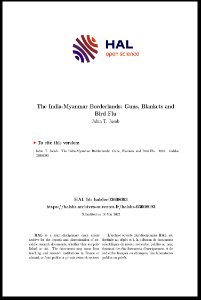By Arjun Punaji
India has risen as a global attraction, captivating audiences with its vibrant cinematic innovations, rich artistic heritage, and profound literary works. These very expressions, however, sometimes clash with the state's desire to follow expected moral codes. The government, wary of "immoral activities" within these creative mediums, prescribes certain norms and imposes penalties for non-compliance. One such contested area is "obscenity," a concept with criminal law repercussions. This paper delves into Section 292 of the Indian Penal Code (IPC) and the concept of obscenity. I will analyse the current legal tests and thresholds for obscenity in light of a rapidly changing world that demands more liberal legislation. Since "obscenity" often aligns with "socially immoral codes," I will examine obscene material through the lens of legal moralism. This paper's main focus is to examine the sanctity and clarity of ‘contemporary community standard’ and also examine that does morality and decency have static meanings or changes over time. Though the ‘Contemporary Community Standard’ is a good law at present, and invoked this standard repeatedly, courts were unable to define and clarify what the contemporary community standard constitutes. My argument is that this standard is problematic and unconvincing since the ‘Contemporary community standard’ itself is highly subjective because within the same community, both conservative and liberal ideas meet and one’s ugliness may become another’s creativity and freedom of expression. Also, morality does not uniformly apply in the same society. What I ‘like’ and approve of material or content may be ‘disgusting’ to others and the ‘contemporary community’ belongs to all sections of society such as rich and poor, readers and illiterates, old and adult, conservatives, and liberals. Therefore, I examine this standard through a ‘legal moralism’ perspective. This includes exploring the famous arguments of Lord Devlin in his "The Enforcement of Morals" lecture, along with the counter-arguments presented by H.L.A. Hart and Ronald Dworkin. Furthermore, we will investigate some of India's landmark (or controversial) obscenity cases. These cases often rely heavily on Western legal interpretations like the Hicklin Test, Miller Test, and the Contemporary Community Standard Test, without providing clear explanations for their application in the Indian context. This analysis aims to demonstrate why India needs to reevaluate its current legal tests in light of societal changes. Then I will propose the "harm principle" as a framework for regulating obscenity, advocating for a higher threshold for punishment. By taking a critical look at existing legal frameworks and advocating for a harm based approach, we can ensure that India's vibrant artistic expressions can flourish while upholding a sense of community decency.
National Law School of Indian University






